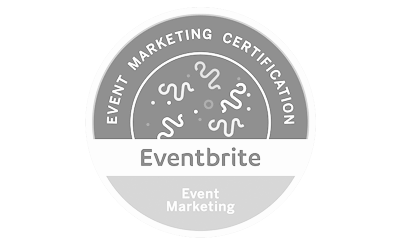
British statesman Winston Churchill once wrote, “Those that fail to learn from history are doomed to repeat it.” And, while this quote and its variations are usually invoked to discuss political and cultural issues, the message definitely applies to marketing expenditures as well. Looking at what a law firm has done in the past can provide insight into the present and inform the firm’s future expenditures in order to achieve better results. While it might sound time-consuming, exhausting, and maybe even impossible to review let’s say the past year’s worth of data, if you know what to look for and have the proper access to your own digital assets, we can tell you how to make auditing your digital marketing (and other forms of marketing) happen. It is definitely not too late to begin reviewing last year’s marketing efforts to inform this year’s strategy.
How to Begin Reviewing Last Year’s Marketing Efforts
All law firms should own and control all of their own digital assets. This means that if you have an external vendor set up a Facebook Page, for example, at least one owner of the firm should individually be the owner of the Page – not just the vendor. Law firms keep notoriously bad track of their login credentials for various assets, including but not limited to online directory listings like Super Lawyers and Avvo, their websites, their domain name registration accounts, social media channels, and more. If the sole person with access to and/or control of any of these items is a vendor or a departing employee, you can find yourself in serious trouble for a variety of reasons – the most obvious being if you are running a paid advertising campaign and can’t access the account to shut it off. As a preliminary first step, ensure that all of the firm’s login credentials and/or access is secured and ready to go. Then, dig into the numbers. Below are the three main digital assets law firms have and use and how to review last year’s marketing efforts and the performance of each.
Law Firm Website
Most law firms do not design and develop their own website in house; therefore, the vast majority of firms have used an external vendor or multiple external vendors to create the pieces necessary for their law firm website. The first step in analyzing a website is to look back to see who created each part of it (content, code, design, etc.) – sometimes this is all done by one agency and other times it is not. Looking at that relationship, which is often ongoing for hosting and what vendors nebulously call “maintenance,” will involve reviewing the contract you signed and any subsequent addendums along with how much you paid previously and how much you pay monthly on an ongoing basis. Once the vendors are identified and contracts reviewed, you should be able to tell what services you may be paying for on an ongoing basis. Those services can include:
- Website hosting
- Website maintenance
- Search engine optimization
- Content marketing, copywriting, or blogging
You should first ensure the vendor is performing all work outlined under the package you are paying for – or in other words, meeting its contractual obligations. This may be hard for someone without marketing training to do, but if you are supposed to receive two blog posts per month you can check and see if two have been added each month for the past year, for example. Once you confirm any ongoing vendor relationships are solid and all contractual work is being completed, you should next evaluate the following areas with regard to your law firm website’s performance:
- Content (especially the practice area pages and lawyer biographies)
- Search engine optimization (SEO) and website rankings
- Website code / technical issues (such as site speed and information architecture)
- User experience
- Website design
- Google Suite (including Google Analytics, Tag Manager, and Search Console)
There are a variety of metrics you can use to evaluate each of these – including things like current best practices when it comes to content length – along with tools (both free and paid) that can provide you with additional insights. Google Analytics provides a wealth of information about who is visiting your website, how they found your website, and what they did once they arrived, while Google Search Console will provide information about how your website is performing in organic search results. If digging into these platforms seems daunting, you can also have an outside audit performed to analyze the data for you.
Law Firm Social Media Channels
First and foremost, be sure that you are the administrator and owner of every single channel and that no external vendor or former employee has this same level of access. For purposes of this blog post, we will stick to the main social media channels law firms use (which are the primary channels we recommend using).
Despite the increase in older folks using Facebook, which has turned a lot of younger users off, it remains a huge hub of digital activity which requires law firms to have a meaningful presence. Every law firm should have a Page – which is for the business – and not a Profile, which is for individuals. When auditing your Page, be sure to review all key performance indicators (KPIs) and other relevant items, including:
- Channel design
- The “About” Tab, especially the description
- Whether you are utilizing the Services feature to list your practice areas
- Reviews
- Posts and their associated engagement
- Page Roles (so you can remove anyone who should no longer have access)
- Followers and Likes
- Reach
Google Business Profile (formerly Google My Business and Google Places)
Since Google continues to dominate search engine usage, of course its own “social” platform is of the utmost importance. Google loves to rename its properties for no apparent reason, so even though this one is of fundamental importance to online success, it has gone through several name changes, which makes it confusing. What is now called Google Business Profile is free and easy to set up and verify. Every business, whether it’s a law firm or not, must claims this Profile and build it out completely. Some important components to evaluate in an analysis include:
- Hours of operation (don’t just list 24/7 as Google prefers to know when you are actually physically open)
- Primary category and secondary category or categories
- Services listed (be sure to review Google’s suggested additions)
- Whether or not all fields are completed, including items like Accessibility and Amenities
- Detailed and keyword-optimized Description
- Opening Date so Google can list your years in business in search and Maps results
- Addition of Google Posts on a regular basis and how they perform
- Reviews (these are the most important reviews you can get on any social network)
- Photos and videos of the interior and exterior of your building and office, among other types specifically detailed by Google
- Insights (the metrics associated with your Profile’s performance), including how many times your Profile was viewed in search results and Maps results as well as how many actions users took in response to that such as calling your office and visiting your website
According to the American Bar Association, over 93% of lawyers use LinkedIn, so if you’re not using at least an Individual Profile, you should be. Every law firm should also have a Page, which is for the business and not a Profile, which is for individuals. When auditing your Page, be sure to review all key performance indicators (KPIs) and other relevant items, including:
- Channel design
- Page Info, including the About description, Specialties (you can have up to 22), and Overview
- Followers
- Updates (which is LinkedIn’s term for posts) to ensure proper formatting
- Engagement
Twitter is not necessary for all law firms, but it is the one social network where your firm can share more content more often and not overload users. When auditing your account, be sure to review all key performance indicators (KPIs) and other relevant items, including:
- Channel design
- Bio
- Audience demographics
- Tweets including formatting, frequency, and engagement
- Followers
Law Firm Paid Advertising Campaigns
Law firms can run any number of paid advertising campaign, including Google Ads, social media advertising, paid directory listings, display ads, and more. The most common form of paid advertising campaign used in the legal industry is Google Ads. The most important components of a Google Ads campaign to review during an audit include:
- Bidding strategy
- Advertising budget by campaign
- Keywords you are bidding on, along with negative keywords
- Ad copy
- Conversions (if the tracking is set up at all and/or set up correctly)
- Impression share
- Position above rate
- Top of page rate
- Click through rate (CTR)
- Conversion rate
Our Legal Marketing Experts Can Audit Historical Data for You
If you are a solo practitioner, run a small firm, or simply don’t have someone in-house with the capability to begin neutrally reviewing last year’s marketing efforts, we can do that for you. We regularly perform “digital assets audits” for law firms of all sizes and practice areas across the country, holding their existing vendors and even in-house marketing and business development staff members accountable for their work by placing a neutral and objective expert eye on all data points. If your law firm would like to learn more about how you can work with Stacey E. Burke, P.C. to audit your marketing efforts, contact us online today or call us at (713) 714-8446.














Leave a Comment